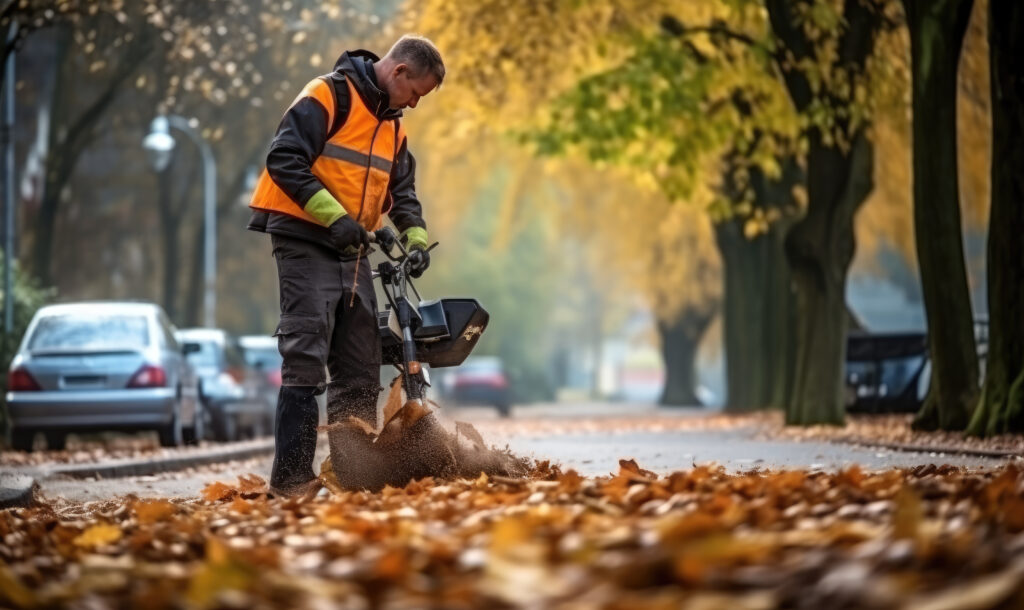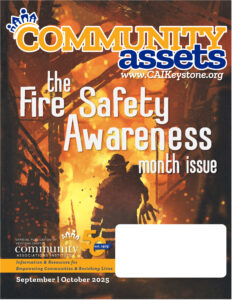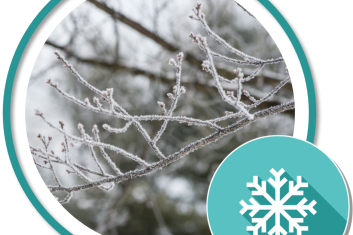by: Adrian Dybka, Advance Home Pros Property Services

As the crisp air rolls in and the leaves begin to fall, homeowners know that autumn is more than pumpkin spice and cozy sweaters, it’s also a critical season for home maintenance. Taking time now to prepare your property can save you from costly repairs and headaches once winter arrives. At Advance Home Pros, we specialize in keeping homes and communities safe, functional, and well-maintained year-round. Here are our top fall maintenance tips to help you protect your biggest investment.
Inspect and Clean Gutters & Downspouts
Falling leaves and debris can quickly clog gutters, leading to water overflow that damages siding, foundations, and landscaping.
- Ensure no tree limbs extend over your home’s roofline.
- Clear out leaves, twigs, and dirt.
- Ensure downspouts direct water at least 3–5 feet away from your foundation.
- Check for asphalt shingle particles.
- Check drains and scuppers for clogs.
Roof & Attic Check
Winter snow and ice are unforgiving to damaged roofs.
- Look for weak spots, algae, missing, curling, or broken shingles.
- Inspect caulking seals around roof vents, flashing around chimneys and skylights.
- Check your attic for signs of condensation, mold, leaks, moisture, or poor insulation. Proper insulation should extend to the eaves without obstructing ventilation openings.
- Check your ceilings for water stains, wet spots, or mold.
Flat Roof
An inspection of a flat roof typically involves checking for ponding water, which can suggest issues with drainage or slope, as well as examining seals and seams for deterioration, and identifying any punctures or cracks. It is important to clear debris to prevent clogged drains and standing water and remove leaves that may retain moisture.
Chimney & Fireplace Readiness
If you plan to enjoy cozy fires this winter, don’t skip this step.
- Have your chimney cleaned and inspected by a professional.
- Remove creosote buildup to reduce fire hazards.
- Stock up on seasoned firewood and check your damper for proper function.
Pest Control
Include pest checks in your fall maintenance plan. Insects and animals like squirrels and birds can damage your roof and attic. Watch for gnawed wood, insulation, wires, nests, or droppings. Pests like termites or carpenter ants can cause severe damage to wooden decks and balconies.
Preventing Ice Dams
Ice dams happen when roof snow melts from attic heat but refreezes at the eaves, blocking drainage. Water can then seep beneath roofing, leaking into your home and causing damage like soggy insulation, stained ceilings, peeling paint, and warped floors. Preventative steps are essential for keeping ice dams away and protecting your roof.
- Maintaining a consistent attic temperature.
- Increasing ventilation with ridge and soffit vents.
- Adding the recommended amount of insulation.
- Covering your attic hatch.
- Exhaust to the outside through your roof or walls, never through a soffit.
- Proper flashing around your chimney.
- Seal and insulate ducts.
Siding
Siding protects your home from weather and pests. Clean it regularly to avoid buildup of dirt, mold, or mildew, and remember that each siding material requires specific maintenance.
- Loose or missing siding leaves structure exposed to moisture and pests.
- Color fading isn’t urgent, but it’s a reminder to investigate options for future.
- Rot. If wood siding appears soft, this may indicate the presence of rot, which should be addressed immediately to investigate underlying damage.
- Buckled, cracked, sagging or warped siding.
- Bubbling or blistering.
- Fill small cracks or chips in stucco, especially near windows, doors, and openings. In fiber cement, look for cracks or chips paying attention to seams and edges.
Windows & Doors
Drafts can increase heating costs by up to 20%.
- Touch-up or repaint.
- Caulk gaps around windows and door frames.
- Install or replace weather stripping.
- Check storm windows for cracks or damage.
- Install a storm door.
- Use a draft guard.
Decks and Balconies
Seasonal changes can impact the safety and appearance of decks and balconies. An annual inspection is essential for ensuring they remain safe, usable, and visually appealing. Whether you’re a homeowner or a property manager, use these guidelines during your inspection:
- Perform a visual inspection: look for obvious signs of damage or wear.
- Check surface conditions: watch for cracks, splinters, rot, or warping.
- Inspect rails and balusters: confirm they are secure, stable, and free from loose components.
- Examine fasteners and hardware: look for rust, corrosion, or missing screws, nuts, and bolts.
- Review joists and beams: note any sagging, rot, or structural damage, these are critical for stability.
- Watch for pooling water: standing water can cause long-term damage.
- Identify mold or mildew: address early to prevent deterioration.
- Assess the finish: reapply sealant or stain as needed to protect from weather and improve appearance
HVAC System Tune-Up
Before the first cold snap, make sure your heating system is ready.
- Schedule a professional inspection and servicing.
- Replace air filters.
- Clean vents and check carbon monoxide detectors.
Prepare Outdoor Plumbing & Irrigation
Frozen pipes are one of the most common and expensive winter emergencies.
- Disconnect and drain garden hoses.
- Shut off and winterize outdoor faucets.
- Drain sprinkler systems and protect exposed pipes with insulation covers.
Patio, Walkway, Driveway, Yard & Landscape Preparation
A little attention now helps your outdoor spaces bounce back strong in spring.
- Store or cover outdoor furniture, garden decorations, and grills.
- Outdoor lighting should be functional and illuminate spaces adequately, particularly stairs and walkways. Replace burnt-out bulbs, add motion-sensor lights.
- Remove stains, repair/patch cracks and chips on walkways and driveways. Resurface if necessary. Use safe, surface friendly de-icer on walkways and driveways.
- Rake and compost leaves.
- Aerate and fertilize your lawn.
- Trim dead branches that could break under snow or ice. It is important to trim bushes and shrubs away from the exterior of your home prior to winter. Excessive vegetation can retain moisture, which may compromise siding materials.
Safety & Emergency Preparedness
Fall is also the perfect time to update safety essentials.
- Replace batteries in smoke and CO detectors if not hardwired.
- Restock emergency kits with flashlights, blankets, and non-perishable food.
- Check fire extinguishers and keep them accessible.
Fall maintenance may feel like a chore, but it’s an investment in your home’s safety, comfort, and longevity. By taking proactive steps now, you’ll enjoy peace of mind all winter long.
ABOUT THE AUTHOR
Adrian Dybka is a managing partner with Advance Home Pros. With more than 20 years of experience in the construction industry, Adrian is widely recognized for his deep expertise and trusted guidance in working with homeowner associations, engineers, and property managers. He specializes in comprehensive evaluations of building exteriors; including roofs, siding, decks, and balconies for both residential and commercial properties, ensuring the long-term integrity and performance of every structure he assesses. He directs and mentors’ teams of technicians, overseeing inspections and repairs with precision and care, while upholding the highest standards of building envelope performance. Contact Adrian at 609.578.4178 or by email at: service@advancehomepros.com. To learn more about Advance Home Pros, visit www.advancehomepros.com.

















